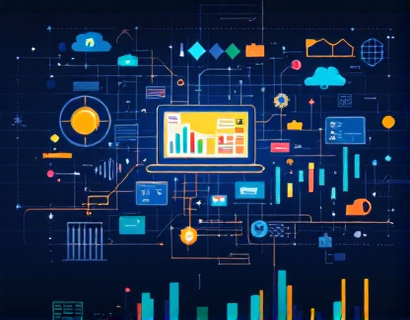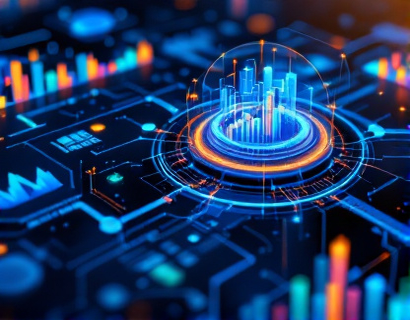Elevating Productivity in the Digital Age with AI and Crypto Innovations
The integration of artificial intelligence and cryptocurrency technologies is revolutionizing the way we approach productivity in the digital age. This convergence of cutting-edge technologies is not only redefining efficiency but also transforming task management in the modern workplace. As tech-savvy innovators and early adopters continue to explore the potential of AI and crypto, the landscape of digital solutions is rapidly evolving. This article delves into how these technologies are synergizing to create powerful tools that enhance productivity and streamline everyday tasks.
The foundation of this transformation lies in the capabilities of artificial intelligence. AI has advanced significantly over the past decade, moving from theoretical concepts to practical applications across various industries. In the context of productivity, AI offers solutions that can automate repetitive tasks, provide intelligent recommendations, and optimize workflows. For instance, AI-driven tools can analyze vast amounts of data to identify patterns and insights that humans might overlook, enabling better decision-making and more efficient resource allocation.
One of the key areas where AI is making a significant impact is in task automation. By leveraging machine learning algorithms, these tools can learn from user behavior and preferences to automate routine tasks such as scheduling, data entry, and even complex problem-solving. This not only saves time but also reduces the likelihood of human error, leading to higher accuracy and productivity. For example, AI-powered virtual assistants can manage calendars, send reminders, and even draft emails, allowing professionals to focus on higher-value tasks that require human creativity and critical thinking.
Cryptocurrency, on the other hand, brings a unique set of advantages to the table. Beyond its role as a digital currency, cryptocurrency technology, particularly blockchain, offers robust solutions for secure and transparent transactions. In the context of productivity, blockchain can ensure that data and assets are tamper-proof and traceable, enhancing trust and collaboration among team members. Smart contracts, a feature of blockchain, can automate and enforce contractual obligations without the need for intermediaries, reducing administrative overhead and speeding up processes.
The combination of AI and cryptocurrency creates a powerful synergy that can further elevate productivity. For instance, cryptocurrency can be used as a medium of exchange within AI-driven ecosystems, facilitating seamless transactions and micropayments. This is particularly useful in decentralized applications (dApps) where traditional financial systems may not be applicable. By integrating AI with blockchain, these dApps can offer intelligent, automated, and secure services that enhance the overall user experience.
Let's explore some specific applications of AI and cryptocurrency in enhancing productivity. One prominent example is the use of AI in project management tools. These tools can utilize machine learning to predict project timelines, allocate resources more effectively, and identify potential bottlenecks. By analyzing historical data and real-time metrics, AI can provide actionable insights that help project managers make informed decisions. When combined with blockchain, these tools can ensure that all project data is immutable and accessible to authorized team members, fostering transparency and accountability.
Another area where AI and cryptocurrency are making waves is in the realm of content creation and management. AI-driven content generation tools can produce high-quality text, images, and even videos, significantly reducing the time and effort required for content production. Cryptocurrency can play a role here by enabling creators to monetize their content through tokenized rewards, ensuring fair compensation and incentivizing high-quality content creation. Blockchain-based platforms can also verify the authenticity and ownership of digital assets, protecting creators from piracy and unauthorized use.
The financial aspect of productivity cannot be overlooked, and here AI and cryptocurrency intersect in meaningful ways. Traditional financial systems often involve cumbersome processes and high transaction fees, which can hinder productivity, especially for small businesses and freelancers. Cryptocurrency offers a more efficient and cost-effective alternative, allowing for instant and low-cost transactions. AI can further optimize financial management by providing predictive analytics for budgeting, forecasting, and risk assessment. By integrating these technologies, individuals and businesses can streamline their financial operations, freeing up more time to focus on core activities.
In the realm of cybersecurity, AI and cryptocurrency contribute to a more secure digital environment. AI-powered security systems can detect and respond to threats in real-time, adapting to new vulnerabilities as they emerge. Blockchain technology ensures that data is encrypted and distributed across a network, making it extremely difficult for hackers to compromise. This dual approach not only protects sensitive information but also builds trust among users, which is crucial for collaboration and productivity in a digital workplace.
The educational sector is another area where AI and cryptocurrency are driving productivity improvements. AI-driven learning platforms can personalize education by adapting to each student's learning pace and style, providing tailored resources and feedback. Cryptocurrency can facilitate the creation of decentralized educational tokens that reward students and educators for contributions, such as creating and sharing educational content. This token-based system can create a more engaging and motivating learning environment, encouraging continuous improvement and knowledge sharing.
In the corporate world, AI and cryptocurrency are transforming the way companies operate and collaborate. AI-powered chatbots and virtual assistants can handle customer inquiries, schedule meetings, and manage emails, reducing the workload on employees and improving response times. Blockchain can be used to create secure and transparent supply chains, ensuring that all transactions are recorded and verifiable. Smart contracts can automate procurement processes, payments, and compliance checks, reducing the need for manual intervention and minimizing errors.
For remote teams and distributed workforces, the combination of AI and cryptocurrency offers unique solutions to maintain productivity and cohesion. AI can facilitate better communication and collaboration through advanced translation tools, sentiment analysis, and real-time translation services. Cryptocurrency can enable seamless cross-border transactions, allowing team members from different parts of the world to contribute without the hassle of currency conversion and high fees. Blockchain-based platforms can also create decentralized workspaces where data and tools are securely shared and accessed by authorized users.
As the adoption of AI and cryptocurrency continues to grow, the potential for innovation in productivity tools is vast. Developers and businesses are increasingly recognizing the value of integrating these technologies to stay competitive. The future holds promise for even more sophisticated AI algorithms and blockchain applications that will further enhance efficiency and task management. From smart homes that optimize energy usage to intelligent cities that manage resources more effectively, the impact of AI and cryptocurrency extends far beyond the workplace.
In conclusion, the synergy between AI and cryptocurrency is redefining productivity in the digital age. By automating routine tasks, ensuring data integrity, and facilitating seamless transactions, these technologies are creating a more efficient and secure environment for individuals and businesses alike. As tech-savvy innovators and early adopters continue to explore and implement these solutions, the landscape of digital productivity will continue to evolve, offering new opportunities for growth and success.











































